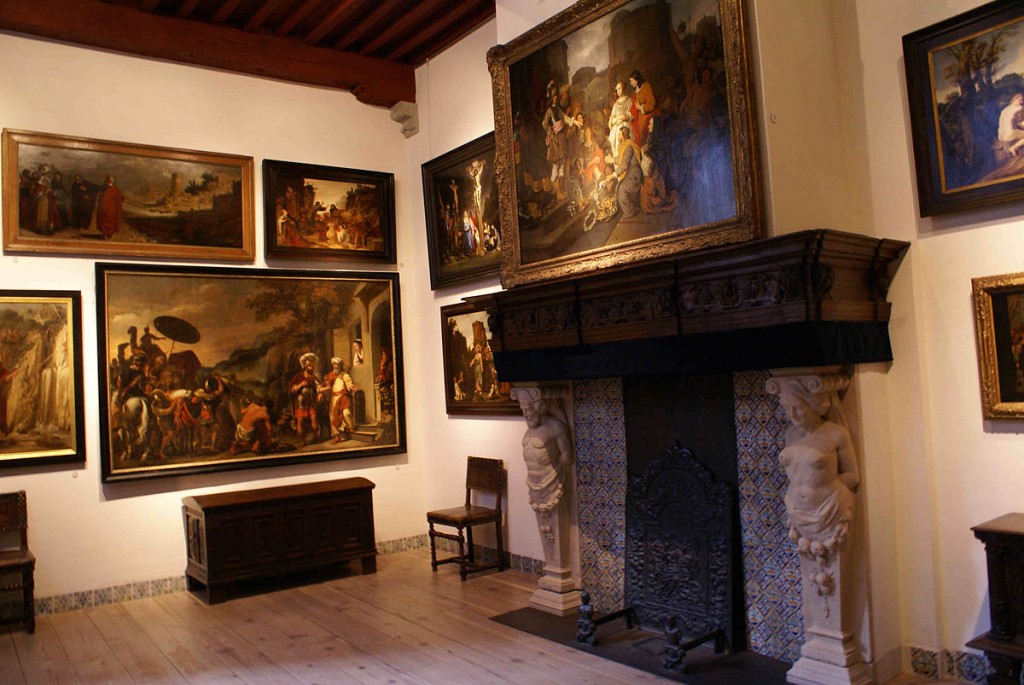The death last Friday of María del Rosario Cayetana Fitz-James Stuart y de Silva, 18th Duchess of Alba, served to posthumously introduce the eccentric aristocrat to a large audience of English-speakers who may not have been previously aware of her. Her aggressive Botox regimen, her several scandalous marriages (including one to a defrocked Jesuit, her former confessor), and her penchant for flamenco dancing made her the perfect caricature of Old World excess and peculiarity. But the quirky duchess was also known for her vast artistic and cultural holdings, which far outnumbered even her many titles: paintings by Rembrandt, Titian, Rubens, Velazquez, Goya, and Renoir; a first-edition copy of Don Quixote; Columbus’s first map of the Americas, and a Bible from the fifteenth century—all these and more were and are property of the House of Alba.
Or, rather, most of these treasures belong to the House of Alba Foundation, a charitable trust interconnected with the Spanish government’s Culture Ministry. The duchess set up the foundation in the 1970s to oversee and preserve the family’s more than €3 billion in assets. The duchess’s eldest son, Carlos, will now take control of the foundation, but, like his late mother before him and whomever succeeds him after his death, Carlos will be unable to manage their major holdings without government approval.
All of this raises a key question about the nature of cultural memory: Who ought to be responsible for preserving a country’s most precious artifacts? Clearly the house of Alba (or its foundation) constitutes an important reservoir of collective identity, especially in a country as culturally rich and diverse as Spain. Should it concern us that this unique and remarkable collection is effectively controlled by bureaucrats in Madrid? What’s to stop the Spanish government from selling off chunks of the Alba collection to ease some future economic pain? Though it would undoubtedly prove an unpopular move, it would not be without precedent—as recently as August of this year Portugal was making final arrangements to sell a large collection of paintings by Joan Miró; bankrupt Detroit’s creditors have taken legal action to compel the sale of the city’s art collection (which includes Picasso, Rodin, Matisse, Bruegel, and more); and there are even furtive whisperings in the French media about selling the "Mona Lisa" to chip away at the country’s massive debt. It seems more and more that governments are looking to priceless art as potential cash cows.
Nor are such concerns exclusive to Caesar, as churches look for new ways stay in the black. Presiding as it does over perhaps the most impressive collection of Western art in Europe, the Vatican for its part has tried to stand firm. Against the ebbs and flows of a volatile global economy, the Church of Rome has refused to hawk its holdings, customarily listing its billions of dollars worth of art at a value of 1 lira and insisting, rightly, that “they belong to humanity.” This has not prevented cash-strapped dioceses – especially in the United States after the outbreak of sex-abuse trials – from turning to the auctioneer to make ends meet (the Boston archdiocese sold off its palatial apostolic residence for more than $100 million, as Cardinal Sean O’Malley recently revealed to “60 Minutes”). Across the Channel, the Church of England came very close to selling a collection of historic Zurbaran paintings for £15 million in 2011; they ultimately retained the paintings after a propitious gift from a wealthy philanthropist (who explains he just “happened to have £15 million” lying around).
If civil governments are surprisingly willing to sell off their cultural holdings and ecclesiastical authorities find themselves increasingly pressured to do so, maybe the flamenco-dancing octogenarian isn’t such a bad custodian of our cultural patrimony after all. The aristocracy may be of less and less value to most European bien pensants, but they can at least be counted on to jealously guard their ancestral trophies. For lovers of art and culture who don’t want to see the Pieta sold to Chinese investment firms or Saudi princes, this is a good thing. Whoever holds the bill of sale for these paintings, however, it is important that they see clearly their obligations to and role within civil society. And if civil society cannot step in to preserve and protect the greatest artistic achievements of the past, then its usefulness as a vehicle for collective identity and memory is truly in question.






